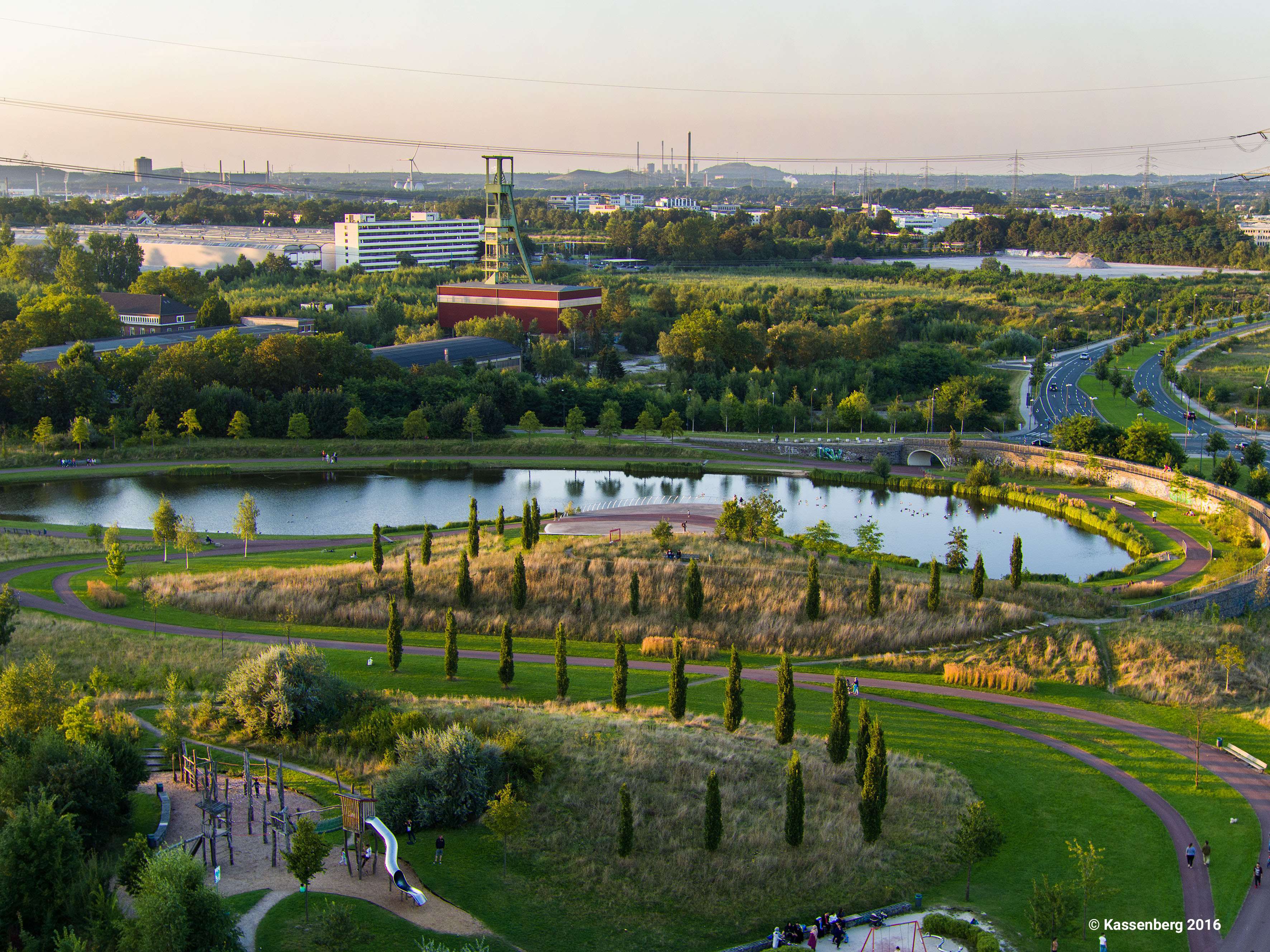
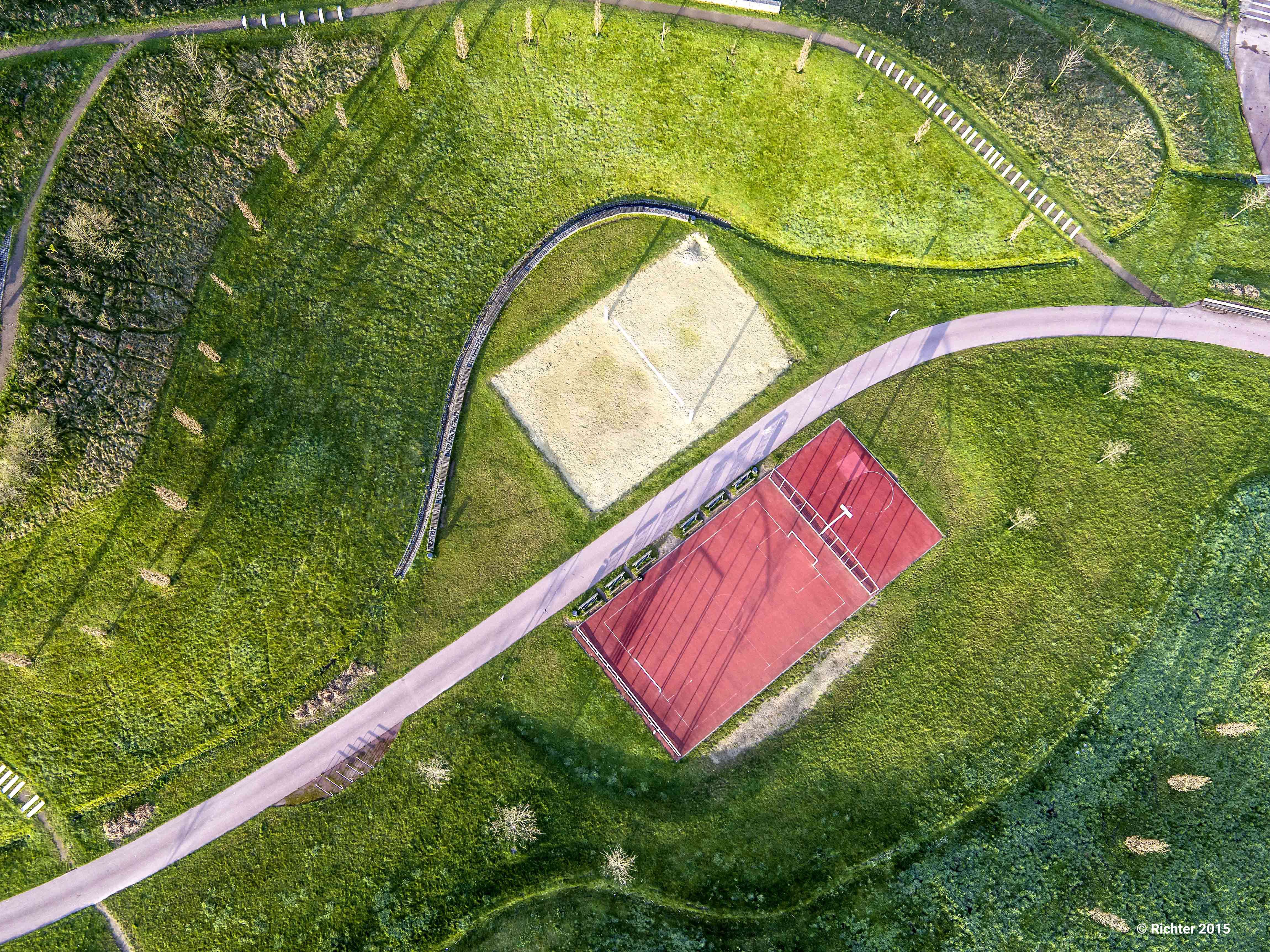
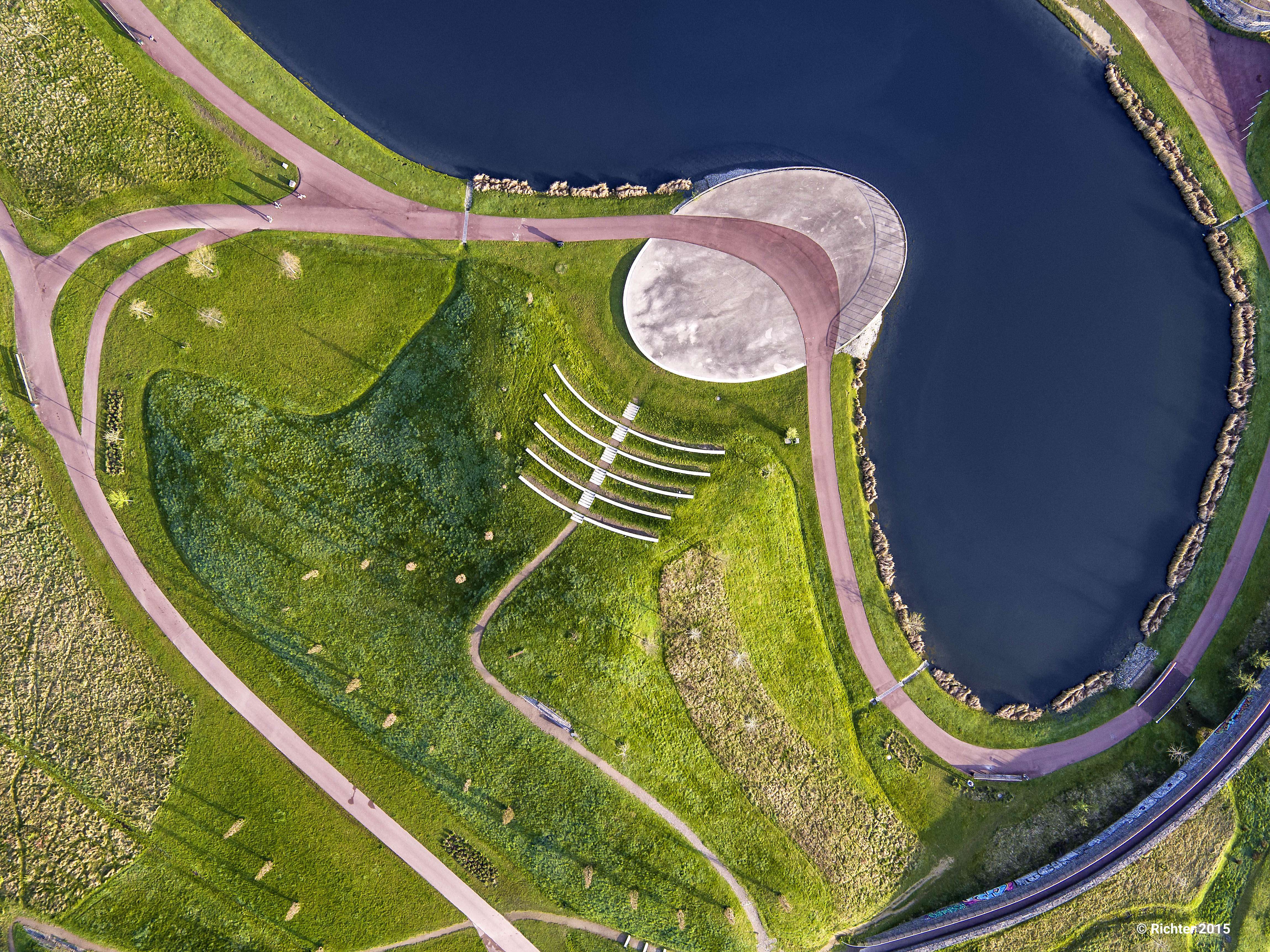
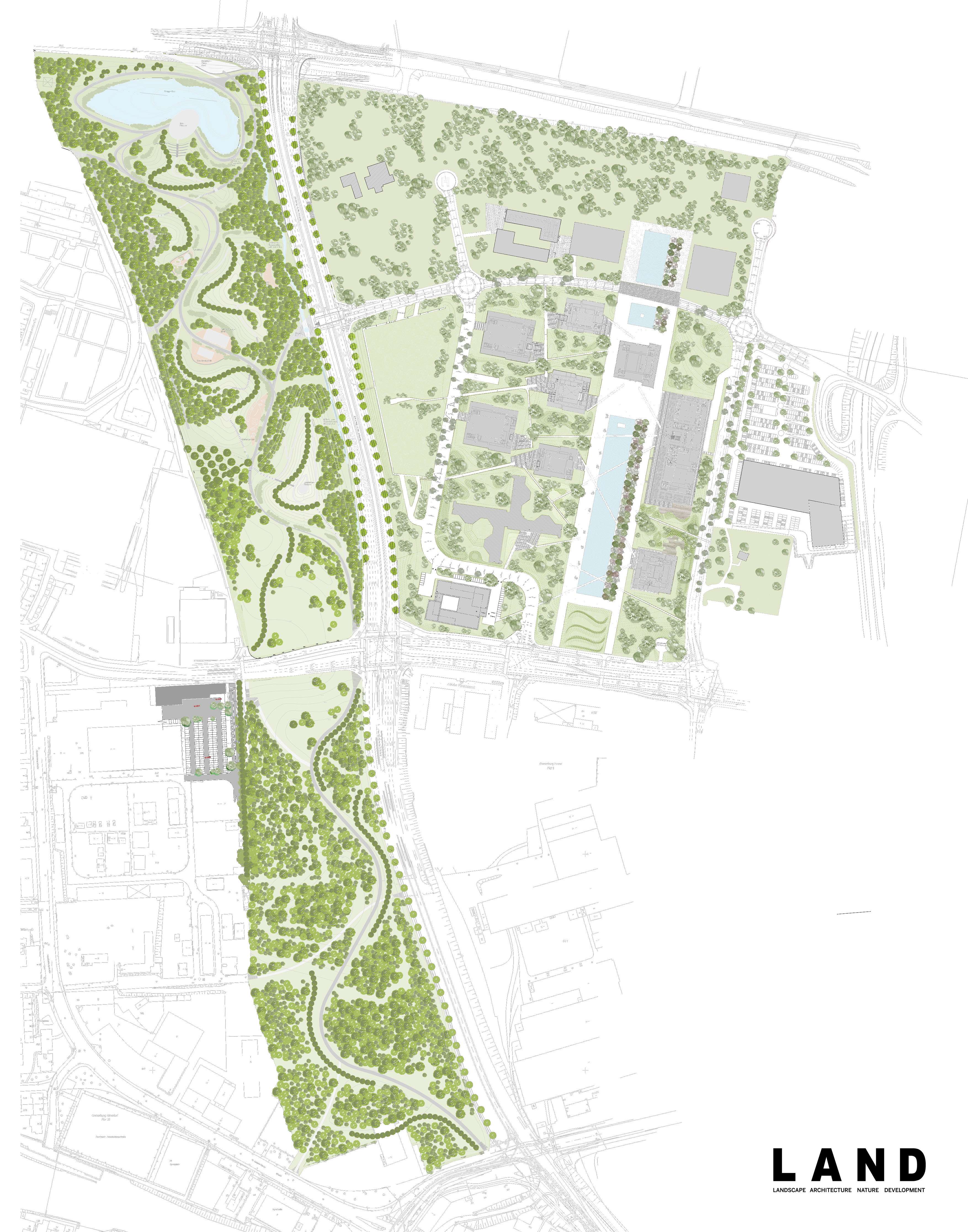
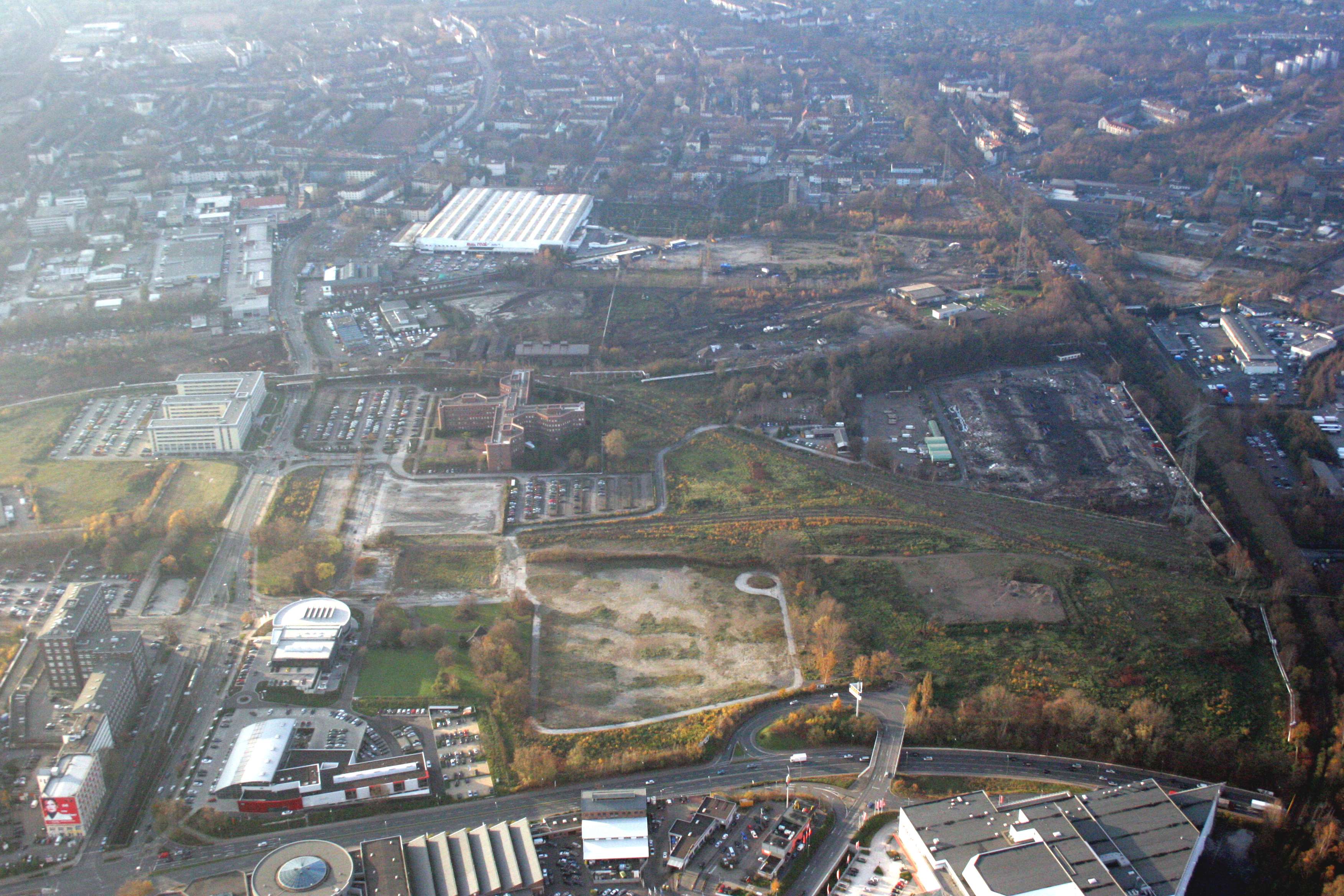
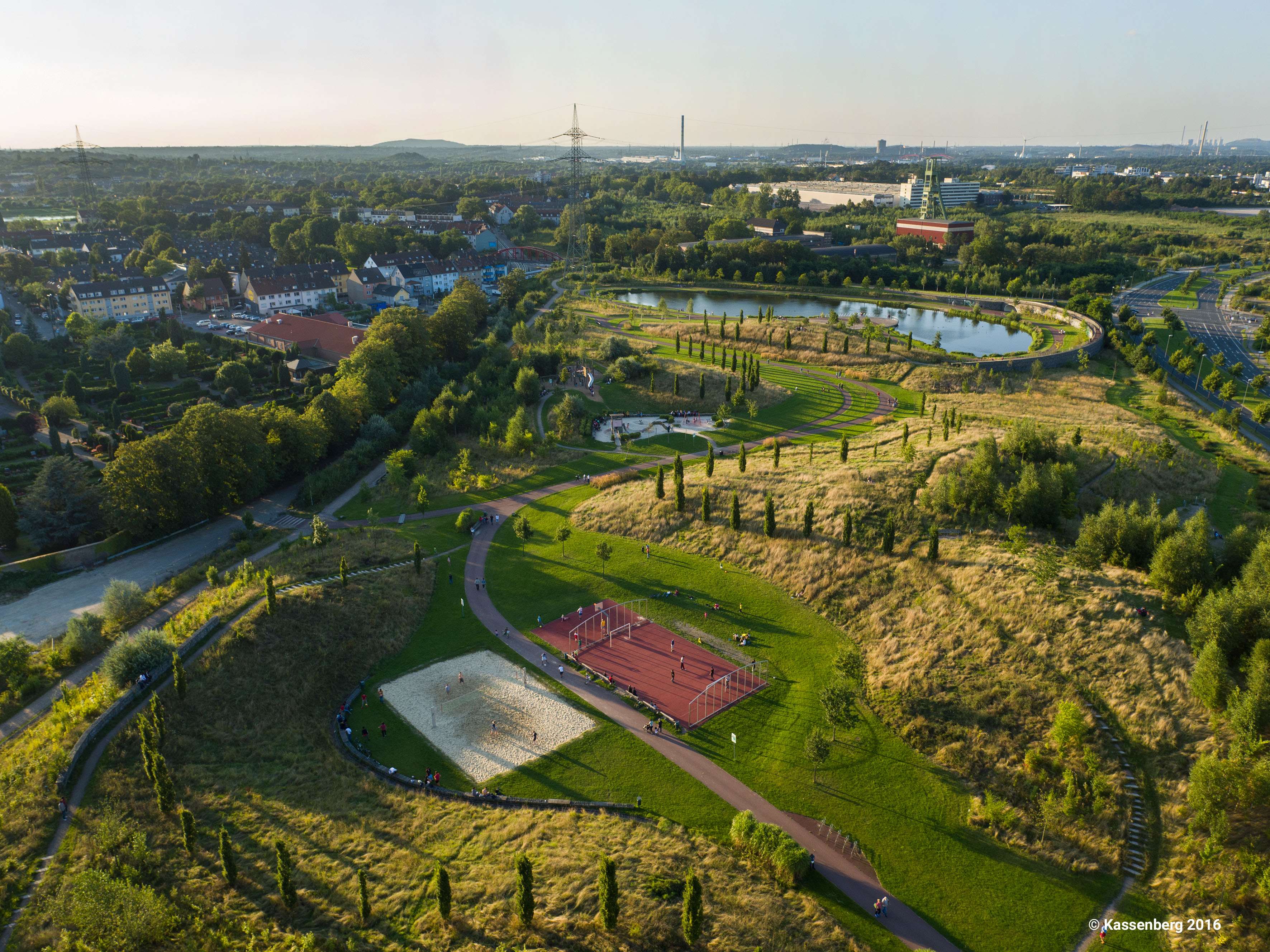
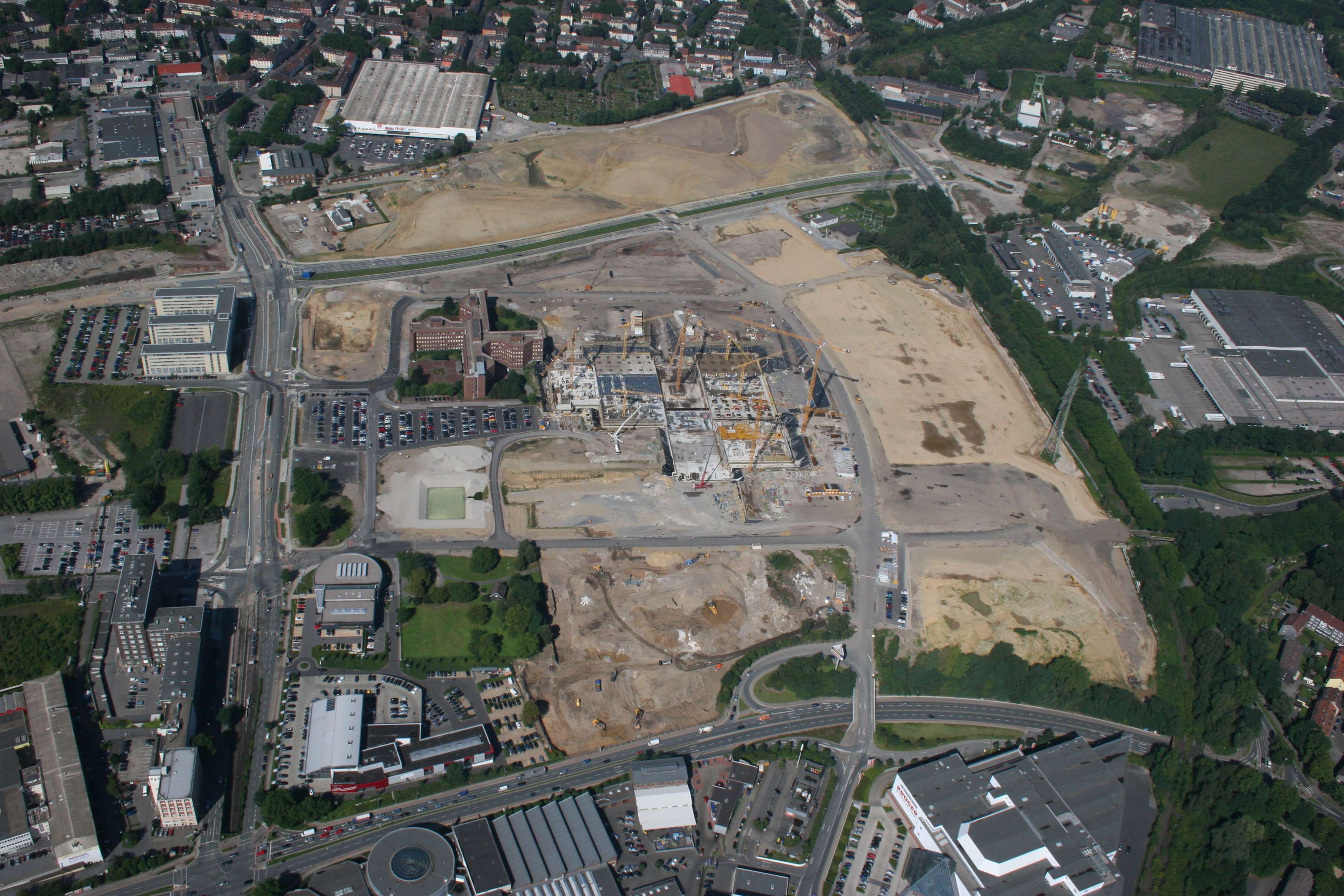
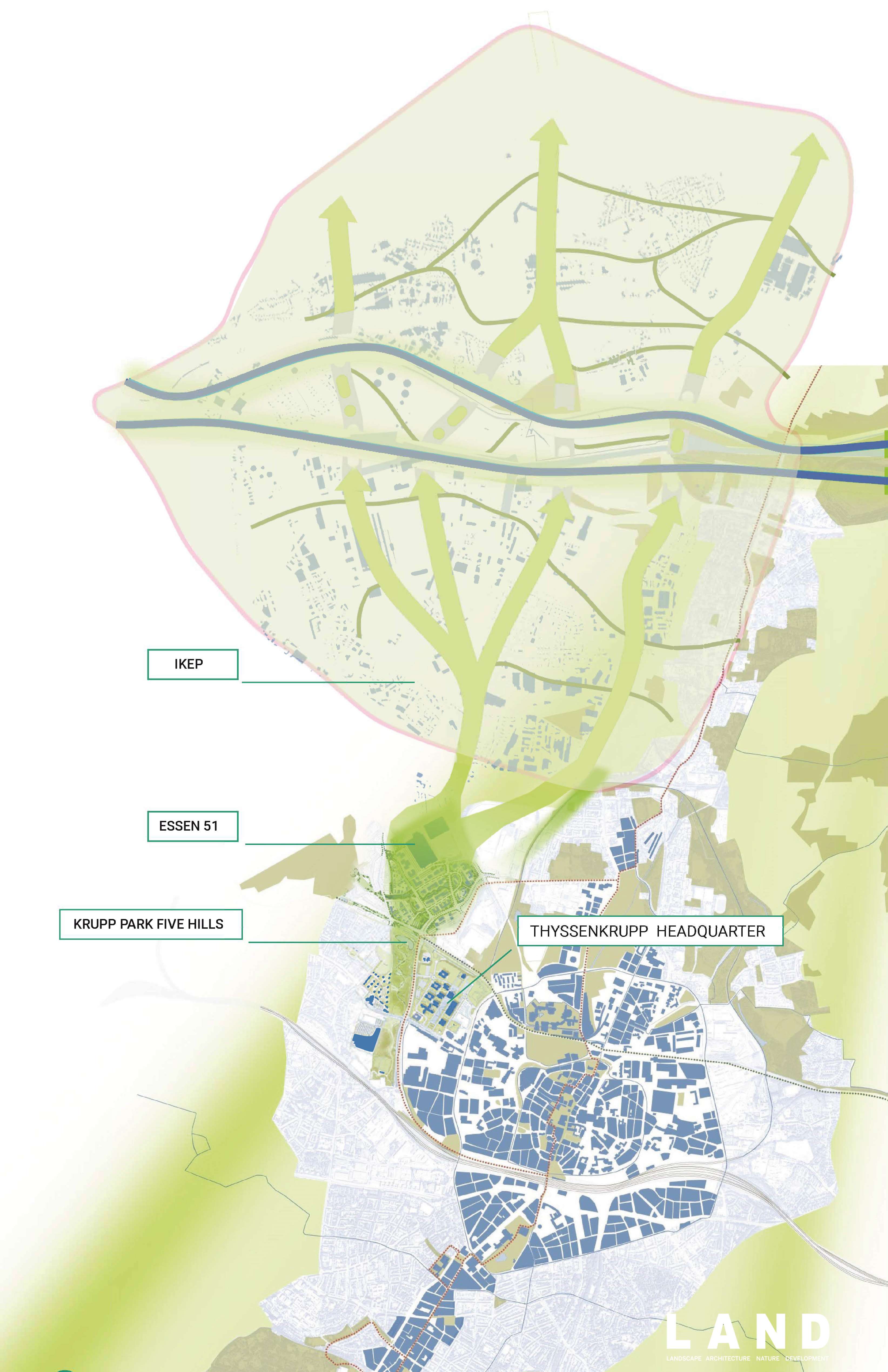

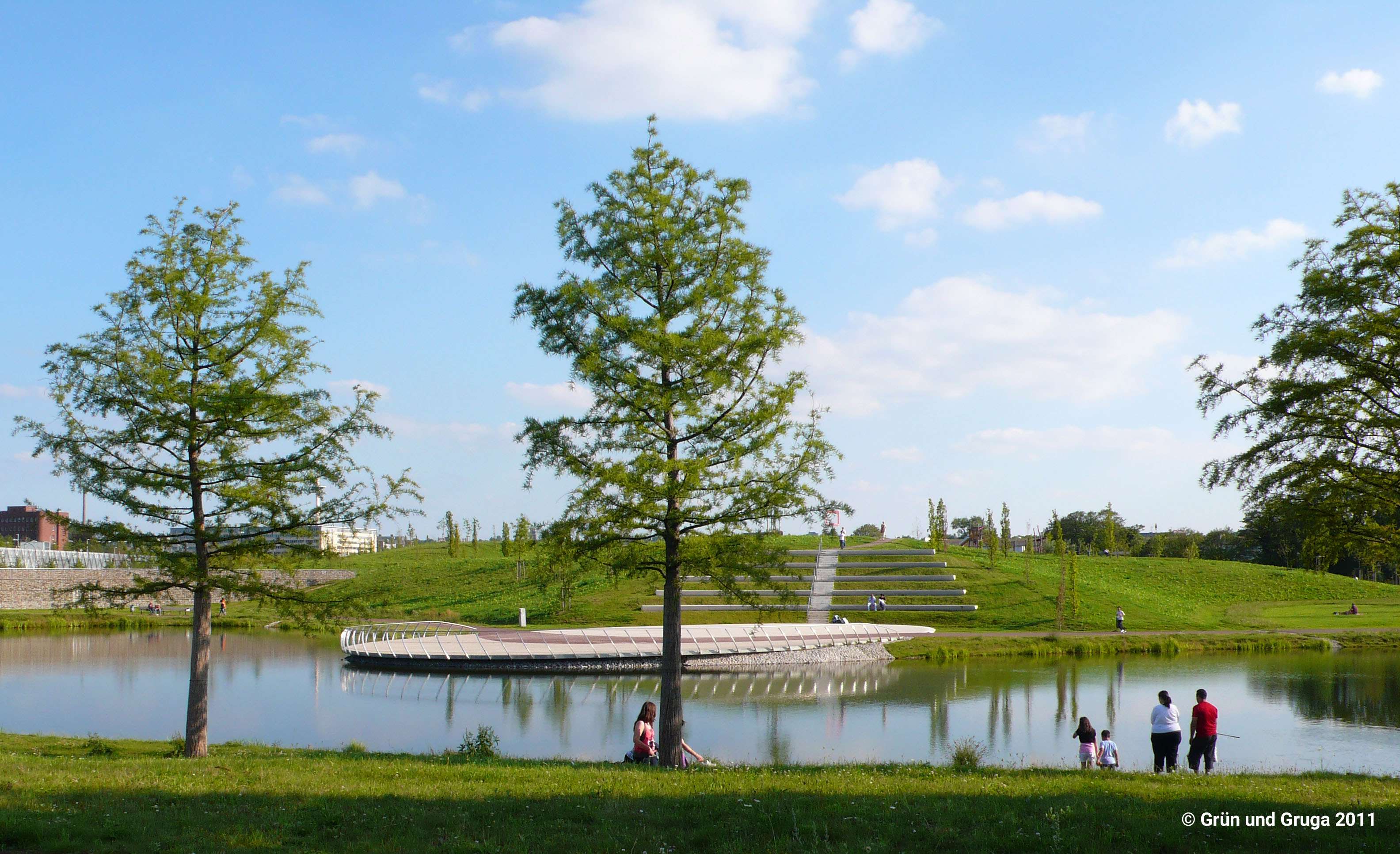
Krupp Park "Five Hills" - From the middle to the edges: new quality of life
Krupp Park "Five Hills" - From the middle to the edges: new quality of life
Krupp Park "Five Hills" - From the middle to the edges: new quality of life
Economic and ecological adaptation processes provide ever higher demands on performance. Special development watch in dynamic times, city areas must be strategically integrated into the urban fabric. Essen has developed in recent years from an industrial city to the European Green Capital 2017. The Krupp Park is part of the strategy "Space Creates Urban Space" (2006) with the associated action program "New Paths to Water" (2006), in which the objectives are pursued, above all, to understand and develop. It was developed on behalf of the urban development project Krupp-belt and forms the approach to an intelligent and sustainable urban development process. It extends to the site of the first Krupp cast steel factory and is an example of the revitalization of an inner city brownfield area. The Krupp Park is the fourth largest recreational area within the city of Essen and is an example of a project for the use of green infrastructures in the Ruhr area. As a forest park, it contributes not only to ecological improvement, but also the city quarters and again closer together.
PROCESS
The origin of the Krupp Park, which today extends over 22 hectares, began in 2006 with the winning design of an upstream landscaping competition. As a first measure, a modeled forest park was established in the northern part on 12 ha. For almost 200 years, the fallow land was unusable for the public and cut off the Altendorf district from the city center. Due to the design to a hill park, a wide "high valley" was designed by earth movements in the circumference of about 400,000 m³, which extends in a north-south direction, accompanied by five hills offset, through the parkland. The main attraction is a 0.9 hectare lake, which is located at the northern end of the park as an "upbeat", directly at the park access points located there and the supraregional bike fastway RS 1 on the route of the "Rheinische Bahn". With the construction of the Krupp Park by the city of Essen began the urban development of the Krupp-belt. After completion in 2012, construction began on the second phase: Krupp-Park South.
DETAILS KRUPP PARK
From an industrial fallow area to a climate-friendly district. The large green area improves the urban climate and relieves the burden of future heat spells in the future as a result of global warming. The intelligent drainage system is prepared for future heavy rainfall events and at the same time makes a contribution to the ecological reconstruction of the Emscher river and its tributaries. The lake is fed with rainwater from Krupp Park and the roof areas of the ThyssenKrupp Quarter. The rainwater from the quarter passes through a canal to the park and emerges from a culvert at the entrance Berthold-Beitz-Boulevard back to the surface. In Krupp-Park, ditches carry rainwater to the lake, from where it is channeled to Borbecker Mühlenbach. Another important development is the conception of the RS 1 cycle path. With this development, the city of Essen is increasingly focusing on environmentally friendly locomotion. In the future, the RS 1, with a total length of 101 kilometers, will create a direct bicycle connection between Duisburg and Hamm. Partly old railway lines or already built paths are used, which are to be integrated into the existing cycle path network. With this development, the city of Essen is increasingly focusing on environmentally friendly transportation and promoting the development of green infrastructures. The pedestrian and bicycle paths as well as the promenades are traffic-proof illuminated. The paths in the Krupp Park invite recreation seekers to go for a walk, jog or enjoy the view. From sunbathing lawns, children's playgrounds and barbecue facilities to sports and action areas, Krupp-Park offers everything that is needed for the recovery of stressed city dwellers.
The Krupp-Park is a module of the Krupp-belt to which also the new project "Essen51" belongs and adjoins the upper end of the Krupp-Park. Since 2018 Essen gets a new district in the middle of the city. The name of the city district is not difficult to deduce: It will be the 51st district of Essen. Another project that is linked with the Krupp-Park and which drives the urban development is the "Intercommunal Developmentplan (IKEP): Freedom Emscher". The existing individual areas must be interwoven: area by area, from east to west along the waters and along the new Emscher Valley, from the Tetraeder in Bottrop through the Essen 51 project to the Krupp Park and the new RS 1 cycle path in Essen. From many parts a whole is supposed to grow; fragments should get connected. The necessary impulses are above all the Emscher. Qualifying different types of open spaces helps to create a model that can grow continuously and create strong structures.
VEGETATION
The vegetation consists of near-natural trees, shrubs and grasses. In addition to the layout of the park, the main goal of the vegetation architecture is to underline the topography of the park. Their course is based on the contour lines, so that the topographic impression intensifies. A total of 123 large trees, which have been formed into rows of trees (Quercus robur fastigiata, Koster '), 271 solitary trees, 17,530 bushes and 16,739 grassy islands and solitary grasses were planted. Grassy islands and reed belts are the complement to the vegetation architecture in the area of the Hochtal and Krupp-See.
BALANCE
For sixty-six weeks, visitors were able to find out more about the innovative and integrated construction and planning process of the Krupp Park and experience live the transformation of the area into a new green infrastructure with recreational, ecological and water-related functions. The event series "Walking on the hills" has invited to participate in the development process through guided tours of the new Krupp Park. In addition, the citizens were encouraged to participate in the design. About the project "home feelings" were u.a. Children and young people involved in the design of the play areas. In a large planting campaign, citizens and school classes had the opportunity to build their own park. The future development of the park landscape is an ongoing process that gradually brings with it changes and constantly creates a new piece of nature in urban space.
